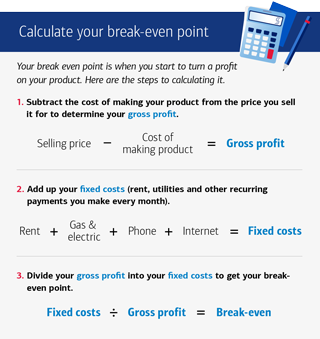For many small businesses, it pays to adjust pricing to reflect local market conditions. For instance, if you do business in a lower-cost market and are pitching business in a higher-cost one, you may want to raise your prices in that market, where the costs of doing business may be higher and your brand image may suffer if you charge too little. This applies whether you are doing business within the U.S. or internationally.
What is more difficult is going after business in a market where competing businesses can charge much lower prices. If you do business in an area where labor and real estate costs are relatively high, it may not be worthwhile to discount your services to enter a new market. You might opt for a premium pricing strategy in which you target a small segment of that market or find a local partner who can deliver your product or service more cost-effectively.
If you offer a service, it’s possible to monitor pricing in your industry by checking out talent marketplaces to see what the going rates are and by networking with industry peers who may not do business on those platforms. For product-based services, there are many industry-specific tools and software programs that can help. Ask for recommendations from industry peers and bankers for one that suits your industry and check out the website of your trade association to see if it has partnered with any software providers.
Pricing is both an art and a science, and most businesses will make some mistakes. Here are some common ones.
Underpricing: This is very common among new businesses; the owner may not fully understand the competitive landscape or the complete cost of a product or service. Some service providers underprice because of imposter syndrome, where they don’t feel they deserve the highest fees because of lack of confidence.
To avoid underpricing, keep your eye on what competitors are charging and, if most are charging more than you, do some digging. Assuming you haven’t found a great new method to reduce your fixed costs — such as using artificial intelligence for a once-laborious process — you may be overlooking a critical factor in your pricing, such as labor costs.
Overpricing: It’s natural to want to get paid well, but to charge more you need to make a strong case that what you’re selling is worth more. That applies to your marketing and branding efforts, the quality you’re delivering, and the buying and follow-up experience.
If you’re not able to find many takers at your current prices, try experimenting with different pricing models — perhaps by offering a temporary discount — to see if those change anything. Alternatively, you may be pitching the wrong customers or selling your product in a market where customers are more price conscious. Doing some additional market research can help you get to the bottom of whether your prices are too high.
There are dozens of tools available online to help with pricing analytics, managing prices across multiple sales channels, optimizing pricing and re-pricing items based on changing market conditions, and a variety of other functions. Some are add-ons to e-commerce platforms such as Shopify or specific to merchants on platforms such as Amazon.
Many of these tools are industry specific, so ask around in your industry for recommendations. Sign up for a trial of any tools you plan to use to make sure they’re user-friendly.
Also avail yourself of market research reports. Some research firms, such as Statista, offer free versions of more elaborate reports, which can get you started if you’re on a tight budget.
Once you’ve used tools like these to come up with ballpark pricing, experimenting in pricing can lead to innovation in how you package and price your services, says Stark. For instance, a plumber who normally charges fees for fixing a clogged drain or broken pipe might consider adding a subscription service, offering landlords and customers who own vacation rental properties unlimited routine services for a $100 a month. Multiply that by just 150 customers who sign up, and it’s $180,000 in revenue per year. A consultant who is charging $250 for an occasional weekly session might be able to encourage clients to sign up for a monthly retainer by discounting the per-session fee if they select this option. The key, Stark says, is to ask yourself, “How can I look different to customers and fill a gap they can’t fill any other way.”
Make sure you keep data on your experiments so you know which ones are working best and would be worth adding to your ongoing offerings and which ones are not as profitable as you hoped.
Investing time to find the right pricing strategy is crucial to a business’s long-term success. The balance between value and profit can transform your financial outlook. Even a small adjustment in pricing can significantly impact revenue, making it easier to achieve profitability and reinvest in growth. The right pricing will not only help drive a business forward but also ensure sustained success and development.



